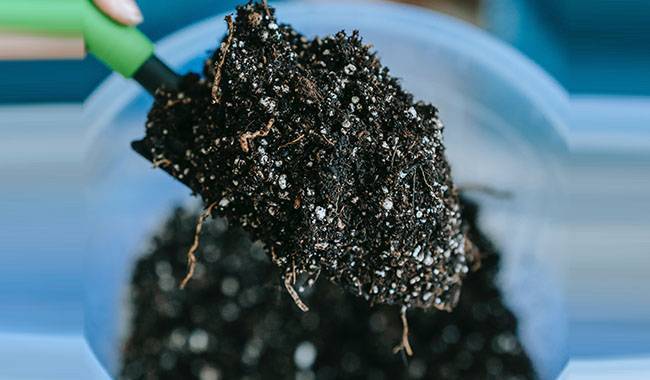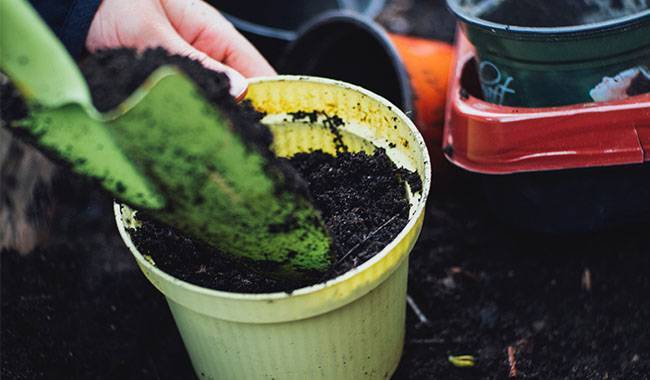
The crops are harvested, and it’s time to prepare for next year. The novice gardener sighs more freely. All the basic work is done. The only thing left to do is buy seeds and plant them in cups, in the ordinary soil of their garden. They were very surprised when the tomato seedlings did not germinate, but an unknown weed did. The mistake of such gardeners is that they try to feed the seedlings with coarse grains instead of baby food. Seedlings need a different soil mixture. Such mixtures can be bought ready-made in specialized stores, but it is better to prepare your own rich gardening soil.
REQUIREMENTS FOR SOIL FOR VEGETABLE SEEDLINGS
Ordinary garden soil is not suitable for sowing. The components of the future mixture must be prepared from autumn onwards. Prepare it in dry weather to avoid soil infections and the full development of pests.
You need 1-3 buckets of potting soil mixture for single-family seedlings, so it is not difficult to collect several components in different containers and store them away from autumn rains.
The basic requirements for the soil mixture are light, breathable and permeable, porous, rich in organic matter, and mineral nutrients in the form of available basic fertilizer salts and trace elements. The pH of the mixture should be 6.5-7.0, i.e., it should be neutral acidity. From autumn onwards, in separate containers.
- Humus (decayed manure) or bio-humus soil.
- Forest leaf or turf soil.
- garden soil from your own garden, from a place where no herbicides, fungicides, or other chemicals have been used.
- Sifted wood ash.
- Straw or sawdust (non-coniferous), perlite, expanded clay, or hydrogel for loosening the soil.
Replenish your home remedy kit with mineral fertilizers and trace element ingredients. Purchase biological preparations that prevent soil infections and pests. The mixture should contain a large amount (up to 30%) of loosening agents so that the weak root system of seedlings does not encounter resistance when growing into the soil.
PREPARING A UNIVERSAL POTTING SOIL MIXTURE FOR SEEDLINGS
During your free time in winter, prepare potting soil mixtures from the materials you have prepared. The simplest universal soil mixture can be made from 3-4 ingredients.
- 1 part of soil with leaves (decayed leaves) or turf soil
- 2 parts of mature humus. Do not use manure, even semi-rotted manure, as it may burn the young roots of the awakening germ. Weathered, non-acidic peat (topsoil) or bio-humus can be used instead of humus.
- 1 part sifted river sand or sawdust to loosen the mixture.
Thoroughly mix the mixture and place it in a container (bag, box) for purification. Sterilize the soil mixture by getting rid of weed seeds, soil pests, and diseases.
PURIFICATION OF THE SOIL MIXTURE
The purification of the prepared soil mixture can be carried out in several ways, including
- Freezing.
- Steaming.
- Calcination (hardening).
- Curing the mixture.
In southern regions, thermal sterilization by steaming or baking is preferable, while in northern regions, sterilization by icing is easier. By wrapping with the preparation, the soil is well purified. It is better to use biological agents, manganese, which is harmless to humans and animals.
Freezing
With the arrival of frost, the container with the mixture was taken outside under a shelter to prevent snow. The mixture is left outdoors for 3-5 days. Under a permanent frost of 5-77 °F (-15-25 ºС), most pests and some weed seeds die. After frosting, the container is placed in a warm room with temperatures of 64-71-77 °F (18-22-25ºС).
Keeping alive, the seeds and pests start to live actively. 10 days later, put the container with the soil mixture back into the frost. This process should be repeated 2-4 times. During this time, the majority of weeds and pests will die.
Steaming
One month before planting, the soil mixture is steamed in a water bath, which can be done in several ways.
Pour the mixture in small portions into a strainer lined with gauze or other fragile cloth. Cover the colander with a lid and place it over a container (bucket or pot) with a small amount of boiling water. Depending on the size of the colander, steam for between 10-15 minutes and 30-45 minutes.
Pour the water into the bottom of the pot and place an elevated rack. Place the potting soil in an old, fine-perforated bag on the rack. The steam from the boiling water steams the mixture for about 1-2 hours.
Spread the steamed, moist soil in a thin layer on paper or cloth and air dry until mature. A properly dried soil mixture should easily break up into small loose particles that feel somewhat like velvet when opened in the palm of the hand after squeezing.
Calcination (hardening)
Moisten the potting soil and spread a 2-2.3 inch (5-6 cm) layer of soil on a tray. Heat in an oven heated to 104-140 °F (40-60ºС) for 30-40 minutes. Then cool.
Curing mixture
Pour the prepared soil mixture into a container. Prepare manganese solution at the rate of 3 g per bucket of water. Sprinkle the mixture with the manganese solution and mix it thoroughly. Spread out for drying.
After all types of disinfection, treat the dried soil mixture with an antifungal biocide (Trichodermin) and biopesticide. To restore the useful microflora, we use a working solution of the dried preparation. After application, the soil mixture is slightly moistened. In a warm, moist environment, useful microorganisms proliferate and destroy the remnants of the pathogenic microflora.

PREPARING CONTAINERS FOR SOWING SEEDS
Prepare containers for sowing seeds in the 3rd decade of January. For sowing, you can buy 50g plastic or polyethylene cups, peat, and peat blocks. You can save money and make your own cups (in a small box with a film covering the bottom) out of thick paper without a bottom and make humus or peat soil cubes with a cross-section of 2-2.3 inches (5-6 cm) to 2.7-4 inch (7-10 cm).
FERTILIZATION OF THE PREPARED SOIL MIXTURE
| Crops | The composition of the soil mixture | Additives (per bucket of soil mixture) | Seed sowing dates |
| Cucumbers | a. Universal mixture (in parts): 1 leaf or sod land, 2 mature humus, 1 sand, 1 sawdust or perlite。 b. Sod land (1 part), compost, or humus (1 part). | a. 1 glass of ash, 15 g each of urea, superphosphate, and potassium sulfate。 b. 8-10 g of ammonium nitrate, 10-15 g of superphosphate, 10 g of potassium sulfate, 10 g of dolomite flour。 | Early April – mid-May |
| Eggplants, tomatoes, sweet peppers | a. Universal mixture (in parts): 1 leaf or sod land, 2 mature humus, 1 sand, 1 sawdust or perlite. b. Garden soil (2 parts), humus (2 parts), peat (1 part), rotted sawdust (0.5 parts). | a. Ash (0.5 cups), 20-25 g of superphosphate, 10-15 g of urea or potassium sulfate. b. 8-10 g of ammonium nitrate, 80 g of superphosphate, 20-30 g of potassium sulfate. | Mid-March – eggplants and peppers, end of March – early April – tomatoes. |
| Tomatoes | a. Humus (1 part), peat (1 part), turf soil (1 part), rotted sawdust (1 part). | a. 1.5 cups of ash, 20-25 g of urea, 60 g of superphosphate, 20 g of potassium sulfate. | Mid-March, eggplants and peppers, end of March – early April – tomatoes. |
| Cabbage | a. Universal mixture (in parts): 1 leaf or sod land, 2 mature humus, 1 sand, 1 sawdust or perlite. b. Sod land (20 parts), ash (5 parts), lime (1 part), sand (1 part). | a. 15-20 g of ammonium nitrate or urea, 20-25 g of superphosphate, 10 g of potassium sulfate, 25 g of dolomite flour or lime. b. Without additives. | February – early cabbage, mid-March – medium. |
USING STORE-BOUGHT SOIL AND HOW TO IMPROVE IT
Making your own basic potting soil mixture for seedlings is not a complicated task, but it does take some time. Therefore, some gardeners, often beginners, buy ready-made potting soil. However, when buying ready-made soil, you cannot be sure that it is a high-quality product. It may be overly acidic, have a high percentage of low-lying peat, may not be purified, which means fungal microbiota will certainly be present, and so on. Therefore, when buying a ready-made substrate, you must be careful.
- Check its acidity, even if it is positive, by adding 2-3 tablespoons of dolomite powder or a small amount of quicklime.
- Perform the purification procedure using one of the above methods.
- If the potting soil mixture contains a lot of peat, add some garden soil (about 30-40% of the purchased soil mass) if necessary.
- After adding garden soil and other ingredients, add some hydrogel in order to moisten the potting soil sufficiently. It will increase in volume 200-300 times in a moist environment, so do not overdo it.
For each bucket of such a soil amendment mixture, add 20-30 grams of all-mineral fertilizer (NPK, nitrogen, phosphorus, and potassium). Remember! The procedure of improving the purchased potting soil mixture will be rewarded with quality seedlings. If you rely solely on the goodwill of the grower, you may end up with no seedlings.
More Related Information About Gardening Tips







